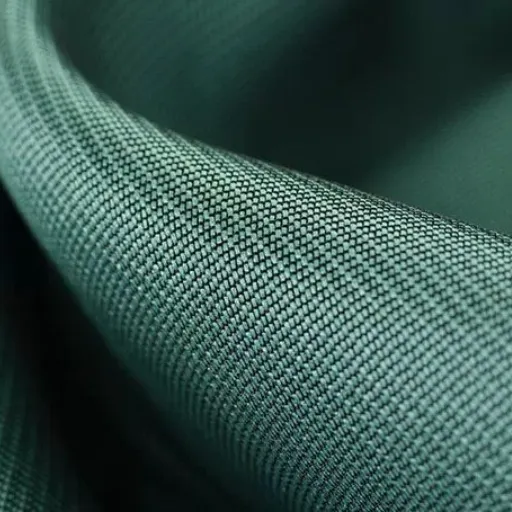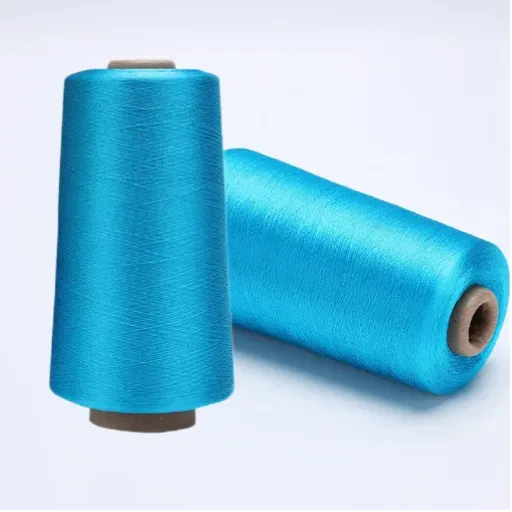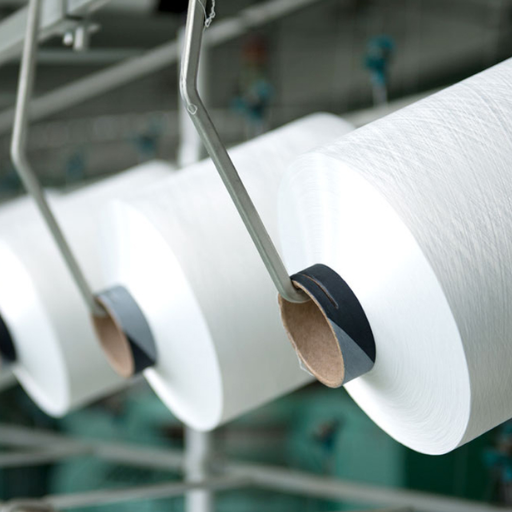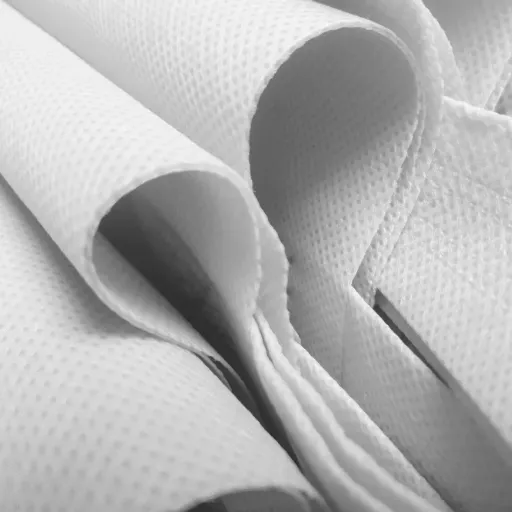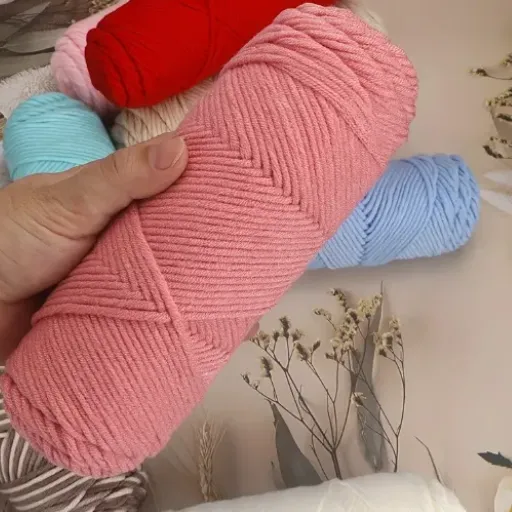Polypropylene fabric, commonly known as woven PP fabric, has been the main material in a variety of industries thanks to its versatility, durability, and low cost. The applications of woven polypropylene range from agricultural uses to packaging solutions where it displays incredible adaptability and at the same time, keeps its strength and lightness. This blog goes deep into the woven PP fabric world, presenting the different types of weaves, their individual features, and their practical uses in various sectors. Whether you want to know the terms of polypropylene fabric or are looking for its potential applications in your business, this guide will give you the necessary insights to take informed steps.
Introduction to Polypropylene Fabric

What is Polypropylene Fabric?
Polypropylene fabric is a synthetic textile created from a specific type of thermoplastic polymer known as polypropylene. This fabric, which has the qualities of being quite strong, very light and water-repellent, has found uses in many industries because of its versatility and economical pricing. The fabric is of a non-woven type, which means that it is made by either bonding the fibers together or by using some other process rather than weaving or knitting.
The main property of polypropylene fabric is that it can resist moisture, stains, and chemicals; thus it is very suitable for outdoor and industrial applications. Besides this, it is very breathable and able to transfer moisture away, thus providing comfort when ventilation is necessary. All these qualities together have made the fabric used in the biomedical industry, agriculture, packaging and even furniture making among others.
Another great thing about polypropylene fabric is that it is recyclable which adds an eco-friendly aspect to its practical issues. The reason is that it can be melted and reshaped without major degradation of the material which encourages the practice of waste reduction. In short, this fabric has the ability to offer both functionality and sustainability hence it is a vital material across the industries covering a great range of applications.
Overview of Woven PP Fabric
Woven polypropylene (PP) fabric is a very flexible and strong material that is made by weaving together strips of polypropylene. This method of weaving gives the fabric a remarkable strength, besides making it very difficult to tear, thus perfect for a wide range of heavy-duty applications. And since the fabric has a lightweight structure, it is very practical and efficient to use.
Moisture, mold, and mildew resistance are one of the Woven PP Fabric’s main advantages. The characteristic makes it suitable for products such as sacks, bags, and tarpaulins that often come into contact with the harshest environmental conditions. Its durability as well as the fact that they are weather-resistant, has led to their wide acceptance in agriculture, construction, and packaging sectors.
Woven PP fabric, on the other hand, is a cost-effective solution that is also eco-friendly because it can be recycled. It can be made again and again and so it doesn’t go to the landfills thus supporting the sustainability movements. The combination of strength, usability, and eco-friendliness ensures that the fabric remains important to different industries.
The Importance of Weave Types in Polypropylene Fabric
Weave types are the most important factors that determine the strength, durability, and use of polypropylene fabric. Woven patterns are conceived for various industrial needs like high tensile strength in heavy-duty applications or softness in light uses. For instance, plain weave is considered to be the strongest fabric structure and, thus, is commonly used for agricultural sacks, while twill weave is more pliable and is often chosen for products that need a softer finish.
The right weave type selection guarantees that the fabric fulfills the requirements of its application. A tighter weave can offer higher moisture and wear resistance, which is very important in construction and industrial packing. At the same time, looser weaves can allow for better ventilation, which is a main factor in applications like crop bags where ventilation is needed to avoid spoilage.
Moreover, the weaves also have an impact on the recyclability and eco-friendliness of polypropylene products. Fabrics with consistent weaves are easier to process during the recycling stage, thus assuring a smooth return to the production cycles. This position in the sustainability area strengthens the value of polypropylene fabrics in different sectors, increasing their importance in modern manufacturing and environmental efforts.
Properties of Polypropylene Fabric
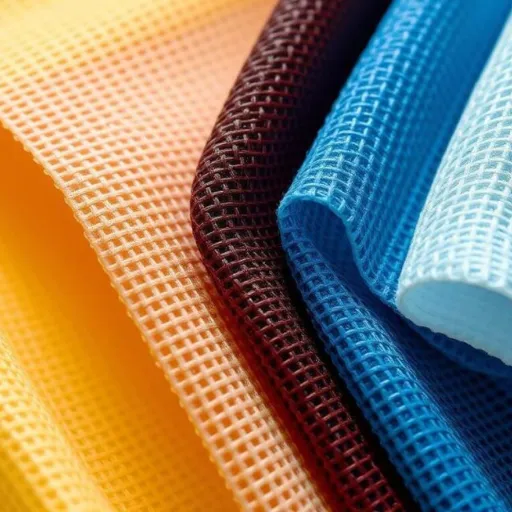
Physical Properties of PP
Polypropylene (PP) fabric was distinguished by its up-to-date lightweight and durable features, which made it a general-purpose choice all over the different industries. One major physical property of PP is its low density, which is responsible for its lightweight nature and suitability for applications where weight savings are critical. But at the same time, this feature supports its competition in terms of being cost-effective because less material is needed to offer strength and functionality.
Then the high strength and resistance to wear are another good reason. Polypropylene fabric is, indeed, tough and resilient, granting itself very strong resistance against stretching, cracking, and breaking. Its lifetime is also very durable and can allow heavy use, hence, the suitability for long-term applications of the like industrial textiles, furniture, and geotextiles.
Moreover, PP fabric showcases outstanding press resistance to water absorption and chemical exposure. It is water-loving, so to say, meaning it effectively keeps the water out, and it is in most cases stable throughout the most acid, alkaline, and organic solvent exposures. The chemical resistance makes an area of usability in the environments where moisture or harsh chemicals are commonplace, thus further illustrating its flexibility in the modern manufacturing industries.
Chemical Resistance and Durability
The woven polypropylene fabric is well-known for its durability and excellent chemical resistance, which makes it a good choice for a wide range of industrial applications. This fabric is extremely resistant to most acids, alkalis, and organic solvents, which allows it to remain strong even in very unfavorable conditions. The high chemical resistance of the fabric guarantees that it will not be destroyed or lose its strength when it is in contact with water, oil, or other chemicals that are usually thought to be very aggressive. Thus, the fabric is a great choice for the manufacturing, packing, and storage industries.
On top of that, woven polypropylene fabric also has the ability to last longer physically than other fabrics. Thanks to its closely woven structure, it has very high tensile strength but is still light. The combination of these two properties offers the material so much resistance to heavy loads and even its use over a long period of time without inflicting much damage on it. The fact that it can resist abrasions also makes it a better choice for tough environments like construction sites, farms, and places where goods are transported.
The factor of woven polypropylene fabric’s global resistance to environmental changes increases the areas of its application. Regardless of the place where it is used, be it outdoors or indoors, the material will not be affected by the hot summer and cold winter weather or even by the sun’s rays. These qualities in the material make it an option to be used for many years, thus simply making it even more versatile and confirming its durability and chemical resistance in modern industries.
Polypropylene’s Environmental Impact
On the whole, polypropylene presents a mixed picture as far as the environment is concerned and therefore, its utilization should be evaluated as a balancing act between its good and bad effects. To put it in a good way, polypropylene is a material that has many applications and can still be recycled over and over again. Collection and reprocessing into new products is a way of slowing down the need for virgin plastic. In addition to that, the durability that goes along with the fact that it is resistant to weather elements is the main cause that products made out of polypropylene last for a long time which in turn might be the reason for less frequent replacements resulting in less waste going to landfills eventually.
However, no one can question that there are environmental impact concerns associated with its use. On the one side, polypropylene is fossil fuels which means it contributes to carbon emissions during the whole process of manufacture. Moreover, it is accurate that polypropylene can be recycled back to its original state, however, the recycling rates are very low because of the limited recycling infrastructure in different areas. The situation gets very grim in case of improper disposal of the product as polypropylene waste will not only contaminate the soil but also the water and the degradation process of such waste will last for decades, eventually resulting in some species extinction due to their habitats being poisoned.
The first step towards alleviating these concerns is to upgrade the recycling systems; then, consumer awareness needs to be raised. Moreover, support for the use of new technologies that make polypropylene waste recyclable can be an authentic way of gradually minimizing the material’s environmental impact. The efforts made so far to incorporate polypropylene into the circular economy are still not enough as it will take more than just good cooperation among industries and governments to achieve maximum sustainability for it in the future.
Types of Weaves in Polypropylene Fabric
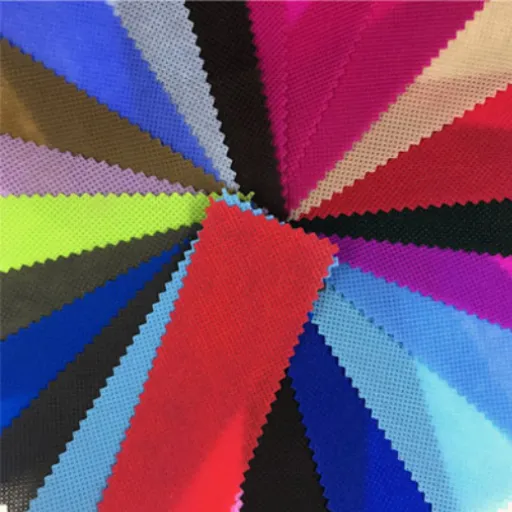
Plain Weave vs. Twill Weave
Plain weave and twill weave are among the most popular weaving methods of polypropylene fabric production where each method has its own unique properties and applications. Plain weave is the earliest of the three types of weave and is the simplest of all weaves with the utmost strength and tightness. This structure, in fact, is perfect for very light daily use packaging, sacks, agricultural tarpaulins, or liners… anywhere you need to keep inviolate strengths and tearing This simple design makes the fabric have consistent strength and a smooth surface. In contrast, the twill weave presents a diagonal pattern that results from the shifting of threads while cross-weaving. Not only does this weave give a softer feel but also greater freedom of movement for the consumer when compared with the plain weave. The look of the fabric can then be more “textured” and more attractive, thus a big part in the aspects of industrial covers or upholstery, mainly because of reaching a better uniform and/or non-visual quality. Moreover, the twill weave drapes well which leads to its high suitability for use requiring pliability. In fact, both weaves have their specific use and are selected based on the needed properties of durability, texture, and flexibility. Though on the whole, the plain weave is great at providing sheer strength and simplicity, the twill weave is the go-to option whenever the flexibility and aesthetic patterns add value. Thus, the selection of the proper weave takes into consideration the intended use and performance requirements of the polypropylene fabric.
Comparison: Plain Weave vs. Twill Weave
| Feature | Plain Weave | Twill Weave |
|---|---|---|
| Structure | Simplest weave with tight structure | Diagonal pattern from thread shifting |
| Strength | Maximum strength and tear resistance | Strong but with greater flexibility |
| Texture | Smooth surface | Textured, softer feel |
| Applications | Packaging, sacks, agricultural tarpaulins | Industrial covers, upholstery |
| Draping Quality | Less pliable | Excellent draping quality |
Specialized Weave Patterns
Different specialized weave patterns can be used to make woven polypropylene fabric, each one addressing a particular functional need. The properties of the fabric, such as its strength, durability, and flexibility, are all affected by these patterns hence the fabric can be used in different industrial and commercial applications according to its properties.
The satin weave is one of the most popular patterns that is frequently used. This weave has a shiny and smoother surface and is more luxurious in terms of texture compared to plain or twill weaves. It is especially selected for applications that require not only durability but also a slight and finer appearance, such as in the case of protective coverings or ornamental elements while maintaining the polypropylene material’s flexibility.
The ripstop pattern is another significant weave. In this method, reinforcement threads are added at regular intervals which absolutely increases the fabric’s tearing and ripping resistance. Ripstop woven polypropylene is found most often in places where strength and dependability are of utmost importance such as geotextiles, heavy-duty bags, or tarpaulins. These specialized weaves give evidence to the versatility of polypropylene fabrics that can be tailored to satisfy the exact performance demands of different industries.
Impact of Weave on Fabric Performance
The weave type greatly influences the performance properties of the manufactured fabric. In general, tighter and denser weaves yield the greatest strength and durability as well as resistance to cutting. Thus, they are the perfect choice for heavyweight use when robustness is a prime factor. On the other hand, loose weaves give more air circulation and flexibility, which are the main characteristics of fabrics that are even made just for comfort and have the lightest weight.
Ripstop weaves are highlighted as an excellent example of how the special weaving technique gives fabric the performance it demands. The weaves do so by reinforcing the fabric with threads at regular intervals, thus preventing the small tears from spreading and coming out. Ripstop fabrics, therefore, are widely used in technical and industrial applications where safety and durability are the main concerns and cannot be compromised.
In the end, the right choice of weave will always depend on what the fabric is to be used for. Different industries will emphasize different traits—like tensile strength, flexibility, or water resistance—when designing fabrics using specific weaves. By choosing the appropriate weaving method, manufacturers will be able to guarantee that the final product not only meets the performance standards but also satisfies the users’ requirements effectively.
Applications of Woven Polypropylene Fabric
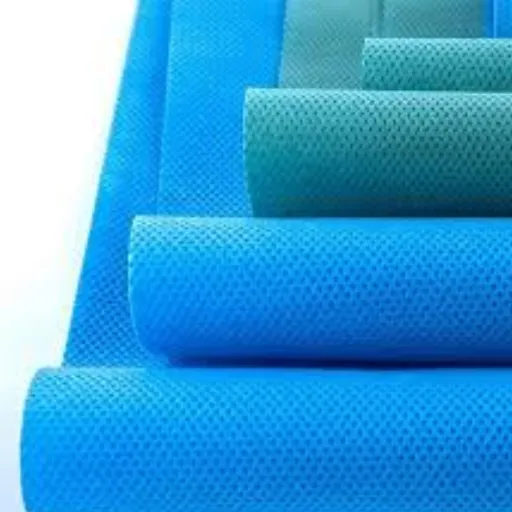
Geotextile Fabrics in Landscaping
Geotextile fabrics are an important part of landscaping, providing solutions to a wide range of problems. These fabrics made from woven polypropylene are mainly used for the threefold purpose of stability, support, and separation in soil management. Their long lifespan and resistance to decay make them suitable for both small backyard projects and big construction sites.
The most common way in which geotextile fabrics are applied in landscaping is for erosion control. These fabrics, by serving as a barrier between the soil and outside forces like water flow, help to retain soil and keep the land intact. Most of the time, they are laid on slopes or right next to rivers to control the erosion during heavy rainfall or strong currents. This not only ensures that the area remains sustainable for a long time but also cuts down on maintenance.
Drainage and filtration are other major uses of geotextile fabrics. The water can be allowed to pass through, but the soil particles remain and thus the drainage system gets improved and the blockages are prevented. These products are often seen in areas such as paths, retaining walls, and also under roads or patios as they contribute to better structural integrity and performance. The range of applications and the effectiveness of polypropylene woven geotextile fabrics make them invaluable resources for both landscapers and construction workers.
Industrial Uses of PP Woven Fabric
Polypropylene (PP) woven fabric has been a reliable material in many industrial sectors and its strength, durability, and versatility are the main reasons for this. Its most common usage is in the area of packaging, where it is the main resource for making sacks and bags to carry grains, seeds, chemicals, and other bulk products. These fabrics have great resistance to wear and tear, so they are a perfect option for heavy-duty packaging requirements in agriculture and manufacturing industries.
Furthermore, PP woven fabric is involved in geotextiles a lot, where it is utilized for constructing barriers or layers in building projects, for example, in road construction, drainage systems, and preventing soil erosion. Its high tensile strength makes the material able to support soil stabilization and, thus, the whole structure will become more reliable during demanding situations when performance is not easily achieved. Therefore, these properties turn it into a material of choice in civil engineering and landscaping.
Moreover, the use of PP woven fabric in the storage and transportation linings is another important industrial application. The fabric’s properties being both waterproof and lightweight, make it appropriate for covering goods during shipping or for making laminations in temporary storage structures. The fabric’s resistance to UV light and climate conditions also contributes to its usefulness in the area of industrial materials protection. These wide-ranging applications reveal the important position of PP woven fabric in providing support to different sectors and making it an indispensable material for contemporary industries.
Key Industrial Applications
- Packaging: Sacks and bags for grains, seeds, chemicals, and bulk products
- Geotextiles: Road construction, drainage systems, soil erosion prevention
- Civil Engineering: Soil stabilization and structural support
- Storage & Transportation: Protective coverings and temporary storage structures
Consumer Products Crafted from Polypropylene
Polypropylene (PP), due to its versatility, durability, and lightweight characteristics, is a key player in the manufacturing of a plethora of consumer products. One such application is the manufacture of reusable shopping bags. These bags are not only able to tolerate heavy loads but also have a long life span owing to their resistance to wear and tear, thus proving to be a practical and eco-friendly option for daily use.
Plastic containers for household storage units, as well, are among the major consumer items produced from polypropylene. The PP containers are made with the property of the compound that resists chemical damage and keeps it shaped over the years, which is why they can be used for food, liquids, or small household items. Moreover, their low cost and simple processing have made them very common in many households.
Polypropylene is also a backing material for the production of clothing and textiles. PP fibers, because of their resistance to stains, moisture, and fading, find their way into rugs, mats, and even some performance apparel. This makes them suitable for both functional and decorative applications in a multitude of environments. The diverse utility of polypropylene continues to position it as a key material in the production of many everyday consumer goods.
Future Trends in Polypropylene Fabric Technology
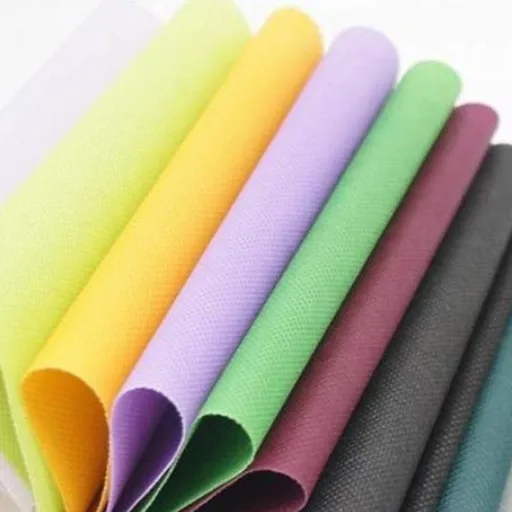
Innovations in Weave Techniques
The field of Polypropylene Fabrics weaving has seen recent innovations or rather substantial advancements, the main concern being the quality of the fabrics with the least possible drawbacks. Among the new ideas is the winding of the weaves tightly and densely to improve the strength of the fabric without increasing its weight. Companies can produce very delicate but very strong materials by adjusting the weaving structure on a microscopic scale, thus making it possible for various uses, including outdoor garments as well as industrial.
Another major development is the introduction of hybrid weaving techniques, where the polypropylene is mixed with other fiber types to create specific characteristics. For instance, mixing/textile-fiber blend of polypropylene with natural fibers like cotton or synthetic ones like polyester has led to the production of fabrics that are more breathable, moisture-wicking and impregnated with the plus points of polypropylene—resistance to staining and degradation. The latter ones are capable of being extremely performance-driven and at the same time, comfort-oriented applications such as sports apparel and upholstery.
Moreover, the digital and automated weaving technology improvements have led to greater precision and efficiency in fabric production. The machines can do very intricate and complex patterns and designs with the least material waste, thereby contributing to both aesthetic and sustainability efforts. The processes keep being refined continuously by the manufacturers and thus the potential of polypropylene fabrics to satisfy the demand of the consumers and the industries is on the increasing side.
Sustainable Practices in Polypropylene Fabric Production
The production of polypropylene fabric has recently adopted many sustainable practices, which greatly aimed at the reduction of its environmental impact. Recycling has come to be the most significant practice whereby post-consumer and industrial polypropylene waste is collected, processed, and turned into new products. The ‘go-around approach’ reduces waste and savings on resources thereby diminishing the need for virgin raw materials and cutting down on carbon emissions generated by production processes.
Energy efficiency is another area that greatly concerns sustainable polypropylene fabric manufacturing. Producers are using advanced technologies and methods to reduce energy consumption during production such as optimizing machines for minimal energy use and also integrating renewable energy sources like solar or wind into their operations. These initiatives are the largest contributors to the reduction of the carbon footprint of the industry while at the same time maintaining production quality and efficiency.
Lastly, manufacturers have made the use of environmentally friendly additives and non-toxic processing methods a priority in order to elevate the sustainability of their products. They are turning to safer chemicals and dyes to prevent the release of harmful substances into ecosystems. Moreover, some companies are looking into the possibility of producing biodegradable variants of polypropylene as a solution to the plastic waste problem. All these sustainable practices together make sure that the industry not only satisfies the present demand but also conforms to the global initiatives of environmental conservation for the coming generations.
Sustainable Manufacturing Initiatives
| Initiative | Description | Environmental Benefit |
|---|---|---|
| Recycling Programs | Collection and reprocessing of post-consumer waste | Reduces virgin material needs and carbon emissions |
| Energy Efficiency | Machine optimization and renewable energy integration | Lower carbon footprint while maintaining quality |
| Eco-friendly Additives | Use of safer chemicals and non-toxic dyes | Prevents harmful substance release into ecosystems |
| Biodegradable Variants | Development of degradable polypropylene products | Addresses plastic waste accumulation |
Market Trends and Demand for Polypropylene Fabric
The demand for polypropylene fabric has been gradually increasing in different areas as a result of its great ability and low price. The material is highly utilized in health and medical, agriculture, and packaging industries due to its long-lasting quality, lightness, and resistance to moisture and chemicals. One of the major factors affecting the demand of the industry is the growing requirement for nonwoven fabrics in powder form primarily in the hygienic and medical fields, where items such as masks, gowns, and disposable hygiene goods are in great demand.
Sustainability trends are playing a huge role in defining the market for polypropylene fabric. The rising global consciousness regarding environmental concerns has led to an increased demand for eco-friendly and recyclable materials. Manufacturers that adopt sustainable practices have chosen polypropylene as their raw material because it is 100% recyclable. Besides, the development of biodegradable polypropylene products has attracted the attention of green-conscious consumers and industries as well as the manufacturers of these products.
The future of polypropylene fabric is bright as the industries keep on carrying out research and developing new products that meet the changing consumer needs. The demand in the Asia-Pacific region, particularly the emerging markets, is expected to rise due to the increasing industrialization and population growth. In addition, the research that aims at improving the performance and environmental friendliness of polypropylene will most likely open up new applications for the material, thus making it relevant for a more extended period across different sectors.
Frequently Asked Questions (FAQ)
Q: What is woven polypropylene fabric?
A: Woven polypropylene fabric is a tough knitted fabric derived from polypropylene. Basically, it is a strong, flexible fabric that gets its strength from the very nature of weaving the polypropylene threads as well as their tightly packed woven structure. The fabric finds its way into almost all industries that need very strong and versatile fabrics like landscaping, automotive, and outdoor furniture due to its water and UV ray resistance.
Q: What are the benefits and applications of woven polypropylene fabric?
A: Woven polypropylene fabric has so many advantages, such as being very light in weight, tear-resistant, and capable of letting both water and nutrients through while at the same time blocking the growth of weeds. This fabric is primarily used in landscaping and horticulture as mulch (polypropylene landscape fabric), but besides that, it finds use in a variety of industries for an extensive range of products like covers, bags, and upholstery fabrics.
Q: How is woven polypropylene fabric made?
A: The making of woven polypropylene fabric starts with polypropylene, a thermoplastic polymer. The whole process of weaving involves the extrusion of the polymer into yarns that are then woven together by the weft and warp method to yield a very strong textile.
Q: Can woven polypropylene fabric be used for weed control?
A: Definitely! Woven polypropylene fabric serves the purpose of weed control. Its structure permits the passage of air and moisture while blocking the weeds, thus making it a perfect ground cover in gardens and other landscaped areas where plants are growing.
Q: Is woven polypropylene fabric easy to clean?
A: Yes, Woven polypropylene fabric is really easy to clean. It can be washed with strong detergents, including bleach, and it can resist spills or soils, thus, the appearance of the fabric will not be affected for a long time.
Q: How does woven polypropylene fabric compare to non-woven fabric?
A: Generally, woven polypropylene fabric is stronger and less perishable than non-woven fabric. At the same time, non-woven fabric is often used in applications that demand softness and flexibility, but woven polypropylene makes the best choice for applications that ask for stability and resistance.
Q: What types of products are made from woven polypropylene fabric?
A: The range of products that come out of woven polypropylene fabric is quite wide and includes cover fabrics for landscaping, automobile interiors, outdoor furniture, and even food containers. The wide usability of the fabric across different industries makes it a very popular choice.
Q: Is woven polypropylene fabric colorfast?
A: Indeed, woven polypropylene fabric is colorfast as it has the quality of not losing color even after prolonged exposure to sunlight and washing. This particular property highly qualifies it for outdoor uses where long-lasting fabric is a must.
Q: How does the diameter of woven polypropylene yarns affect the fabric?
A: The diameter of the yarns used in weaving polypropylene can be a factor in determining the strength and feel of the fabric. A thicker yarn will give the fabric more durability, whereas a thinner yarn will have a softer feel making it more versatile for different applications according to the purpose.
References
- Exploring the World of PP Woven Fabric: Properties, Uses, and Benefits – A detailed overview of the properties, uses, and benefits of woven polypropylene fabric.
- What Is Polypropylene Fabric – Types, Properties, Uses & More – A comprehensive guide on polypropylene fabric, including its applications in industrial and agricultural textiles.
- PP Woven Fabric Roll Manufacturer & Supplier – Information from a leading manufacturer of woven polypropylene fabric rolls.
- Polypropylene Fabric: Properties, Uses & Industrial Applications – Insights into the strength and reliability of woven polypropylene fabric for heavy-duty applications.
- Understanding Woven PP Fabric: Uses and Benefits – A resource explaining the applications of woven polypropylene fabric in packaging, agriculture, and construction.









